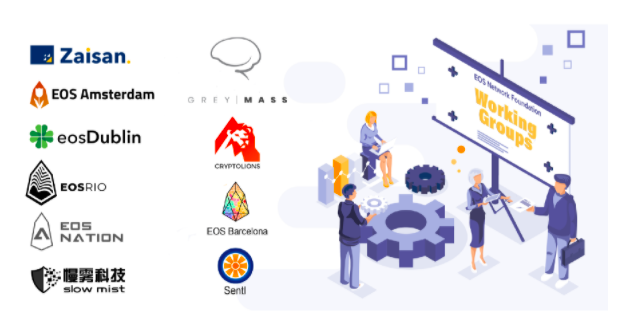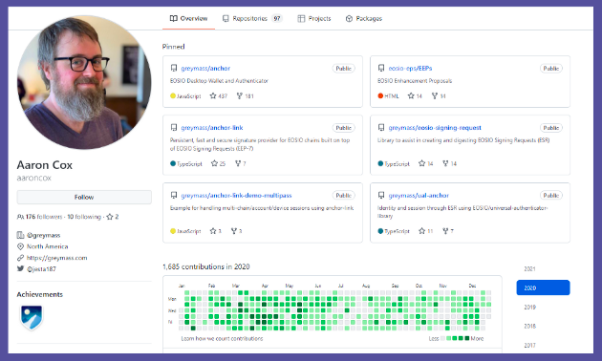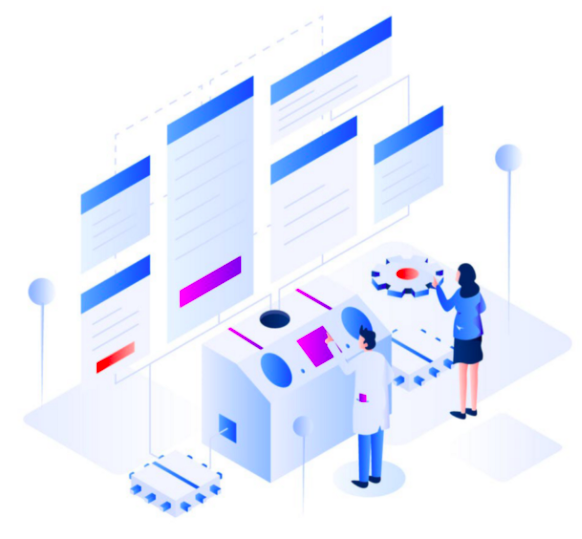
The past few weeks have been explosive for EOS and progress has been made at a record pace. The EOS Network Foundation (ENF) has injected more than $7 million into the EOS ecosystem through Eden on EOS, endorsement grants, and grant matching pools from Pomelo, the new crowdfunding platform supporting EOS public goods. In addition to these EOS Network Foundation-led initiatives, we also witnessed Brock Pierce announce through his new investment vehicle, Helios, that he is “all in” with the EOS community.
However, these moves are just the beginning of a new era of collaboration that will guide EOS' long-term vision and technology roadmap. The goal of the ENF's latest initiative is to make EOS more accessible to the builders who use it every day through an initial $1.1 million sponsorship of four working groups (WG+) ($250,000 X4 + $100,000 for oversight and coordination functions). Better yet, these working groups are tentatively named API+, Wallet+, Core+ (formerly Docu+) and Audit+.
first level title
Four Pillars of WG+
Each working group will create a Blue Book (explained below) paper covering research that is closely related to some aspect of EOS. This research should cover what exists on EOS, similar content offered by other ecosystems, and identify any improvements and additions that could be made for EOS.
Based on the studies completed, the working group will make recommendations identifying which projects are the highest priority and provide a detailed plan on how it will be carried out, as well as a budget and costing for the overall proposed approach.
The division of labor of the 4 working groups is as follows:
1. Core+ will be used with software that is maintained and allows applications to run on EOS.
2. Audit+ will provide EOS applications with security analysis tools and an overall framework for contract auditing.
3. Wallet+ will cooperate with software to integrate EOS into external applications.
4. API+ will be used with software that provides EOS data to external applications.

Core+
Zaisan is a blockchain solutions company with extensive industry experience in enterprise solutions, development and security across multiple blockchain ecosystems. Zaisan is an official business collaboration between four established teams: EOS Amsterdam, EOS Dublin, EOS Barcelona and Cryptolions.
Zaisan is the core developer behind the legally compliant EOSIO-based EuropeChain, my.D identity solution, and is a partner or collaborator on many other projects across multiple blockchain platforms. The Zaisan team also acts as a consultant for enterprise blockchain solutions and as a technical consultant for blockchain training and workshops.
Audit+
Sentnl is a blockchain audit company specializing in penetration testing, wallet security audits, and smart contract audits for the EOSIO blockchain.
Slowmist is a blockchain security company that provides solutions including security auditing, threat intelligence (BTI), bug bounty, defense deployment, security consulting, and other services for the EOSIO project.
Wallet+
Greymass is a block producer on multiple EOSIO chains, an organization established to support the development of distributed ledger technology infrastructure. Greymass is the core developer of the Anchor Wallet, Greymass Fuel, and the EOSIO Signature Request (ESR) protocol.
*While Greymass is the only official partner of Wallet+, others involved have started contributing to the working group's work as external collaborators under their direction.
API+
For the introduction of Greymass, please refer to the description of Wallet+ above.
EOS Nation is the top ranked EOS block producer, top developer behind Pomelo, .gems, EOS Name Service, EOSX Block Explorer, EOS Detective. EOS Nation is also the only infrastructure provider for dfuse on EOS, and also maintains its EOSIO codebase.
first level title
Oversight coordination function
In addition to forming the aforementioned working group, Aaron Cox (Greymass) was hired as lead project manager for the entire working group to ensure consistency of action and overall communication among all involved groups. As the technical lead of EOSIO and a participant in two working groups, Aaron is in an ideal position, he understands the challenges and pain points faced by developers, and what kind of solutions are needed.
Each of the four working groups is responsible for drafting a"blue book", an architectural blueprint, this blue paper will integrate the content of the traditional white paper, yellow paper, request for proposal and road map. Our goal is to publish these four documents before the upcoming Chinese New Year.
first level title

Working Group Structure and Budget
Each task force was assigned a budget of $250,000. These funds are deposited into an account with an MSIG-permissioned structure, requiring a consensus among them on how these funds will be internally distributed. Each working group works autonomously under a DAO-like structure that needs to build consensus and accountability.
For example, a working group might need to agree on hiring a technical writer so that those involved in the research don't have to get bogged down writing technical papers. Bringing in specialists when necessary will significantly increase productivity and overall value. The team will also inevitably encounter additional work. Therefore, the money will be used by various working groups to improve the EOS ecosystem. Each working group is given sufficient resources to be able to actually go out and conduct intensive research, recruit the necessary experts when needed, and provide clear, actionable recommendations.
first level title
empower the community
The key to the WG+ program is engagement. The talented developers of the EOS community are one of our greatest assets, yet they have often felt neglected and isolated over the years. The most talented and experienced developers in the EOS ecosystem have traditionally been affiliated with block producers. Effectively, this makes them ineligible for funding in previous funding mechanisms outside of BP awards. The EOS network previously lacked the resources to coordinate and pool public goods, and thus, stagnated as a whole. Developers often find themselves in a frustrating position without the tools or resources they need, nor the motivation to collaborate on the work that is so beneficial to the web. These issues make it difficult for EOS to be adopted by large-scale developers, and our original intention by sponsoring WG+, Pomelo, and Eden on EOS is to solve these problems.
These working groups will leverage the community talent, wisdom and enthusiasm that EOS has. In addition to the above-mentioned core team, part of the research and development of each working group will draw on the knowledge and expertise of countless other individuals, projects and enterprises. We have been working on EOS for many years, dreaming of building a brighter future. We now have the opportunity to realize our dreams.
By comprehensively researching and consulting with experts inside and outside the EOS ecosystem, WG+ will also give us a chance to see what is happening on other blockchains, what already exists on EOS, how it can be improved, and whether there are other blockchains that can be leveraged. s things. Once the studies are complete, each working group will make recommendations indicating which items are the highest priority and plan in detail the scope of work, dependencies and cost basis for each proposal. All of this research will be presented to the EOS community in an upcoming "Blue Book".
The EOS Network Foundation hopes that WG+ will take a look at the entire blockchain and encryption field, truly analyze and understand the successes, reasons, and of course, more importantly, why they failed. Often in the blockchain world, it's easy for developers to get locked in our own bubble. Attention is often so focused on our own echoes that important learning opportunities are overlooked. When the EOS network finally looks up to see what is going on elsewhere, we may all find some new inspiration and ideas.
The Pomelo crowdfunding network is a successful example. It uses the same quadratic funding model that has been successful on Ethereum with Gitcoin. It shows how a blockchain can learn from other blockchains.
first level title

The power of collaboration
The follow-up efforts of these working groups and the EOS community developers will be the most collaborative efforts EOS has ever seen. I hope this will bring great value and opportunity to the EOS ecosystem.
The approach of the EOS Network Foundation is one of collaboration and agility. We'll start by going out to the community, doing research and asking them to identify the biggest pain points and recommend the ideal way forward. Taking the time to fund research and conduct environmental assessments is positioning the EOS network for future success. In EOS, we never had this near-luxury opportunity. Once the problem is identified, we can take a broader look at our gaps and offer a set of solutions before getting back to the community.
With so many talented people involved and a delivery coordinated by Aaron Cox, WG+ is sure to deliver. One of the main challenges of blockchain, and indeed of any technology project, is managing expectations. The market can be very impatient, often looking for instant gratification without understanding that development is a long-term process. By providing the EOS community with a multi-pronged roadmap, it will have many outcomes to look forward to that can generate discussion, anticipation, and all kinds of noise before each release.
first level title
Increase talent pool
WG+ will also increase the number of talents working on EOS. Having a budget of $250,000 will also facilitate the signing of many technical writers, advisors, and consultants to lend their expertise to the growth of the EOS network, giving the ecosystem a much-needed boost. WG+ will provide these working groups with resources and initial funding to recruit the experts they need. It will also create jobs, spark activity, and bring more people onto the EOS network.
first level title

Research first, build later
By first focusing on the research and publication of a series of blue papers, it will allow the working group to establish a framework where all relevant stakeholders have the opportunity to provide feedback on how EOS should evolve. After the review, WG+ and the EOS Network Foundation can discuss and start coordinating practical steps for deployment. Research or build anything, it could be anything from marketing to documentation or design to a whole new codebase.
So it may be a while before we see noticeable results, but we should see recommendations in the coming months. It's worth noting that the working group itself won't make any decisions directly, they'll say,"Here's what we think the problem is, and these are our suggested solutions"。
first level title
Defining Standards and Frameworks
Standards are critical to the development of EOS. For example, we want to be able to say --"If you want to do something, this is what you can do". EOS has not yet developed a standard.
The standard will give developers a mini-roadmap for whatever functionality they want to create, whether it's co-signing transactions as apps, or showing how API endpoints provide data.
While the Blue Book may not specifically define standards, it will be able to identify where standards are needed and how they can be beneficial. This may drive community acceptance of a new standardized way of operating EOS.
epilogue
epilogue
We are at the beginning of a long journey, EOS is still catching up, but we are accelerating. We've identified what has held us back in the past, and we now have everything we need. We have entered a new era of collaboration that allows us to remove previous major barriers.
The formation of Core+, Audit+, Wallet+ and API+ adds another exciting chapter to the EOS story. We have always believed that the technology of the EOS ecosystem is unparalleled, because it is the most talented and passionate developers who make EOS.
The EOS Network Foundation is providing ecosystem support that has been lacking. With the help of the community, we can make EOS the thriving blockchain ecosystem that has been expected.